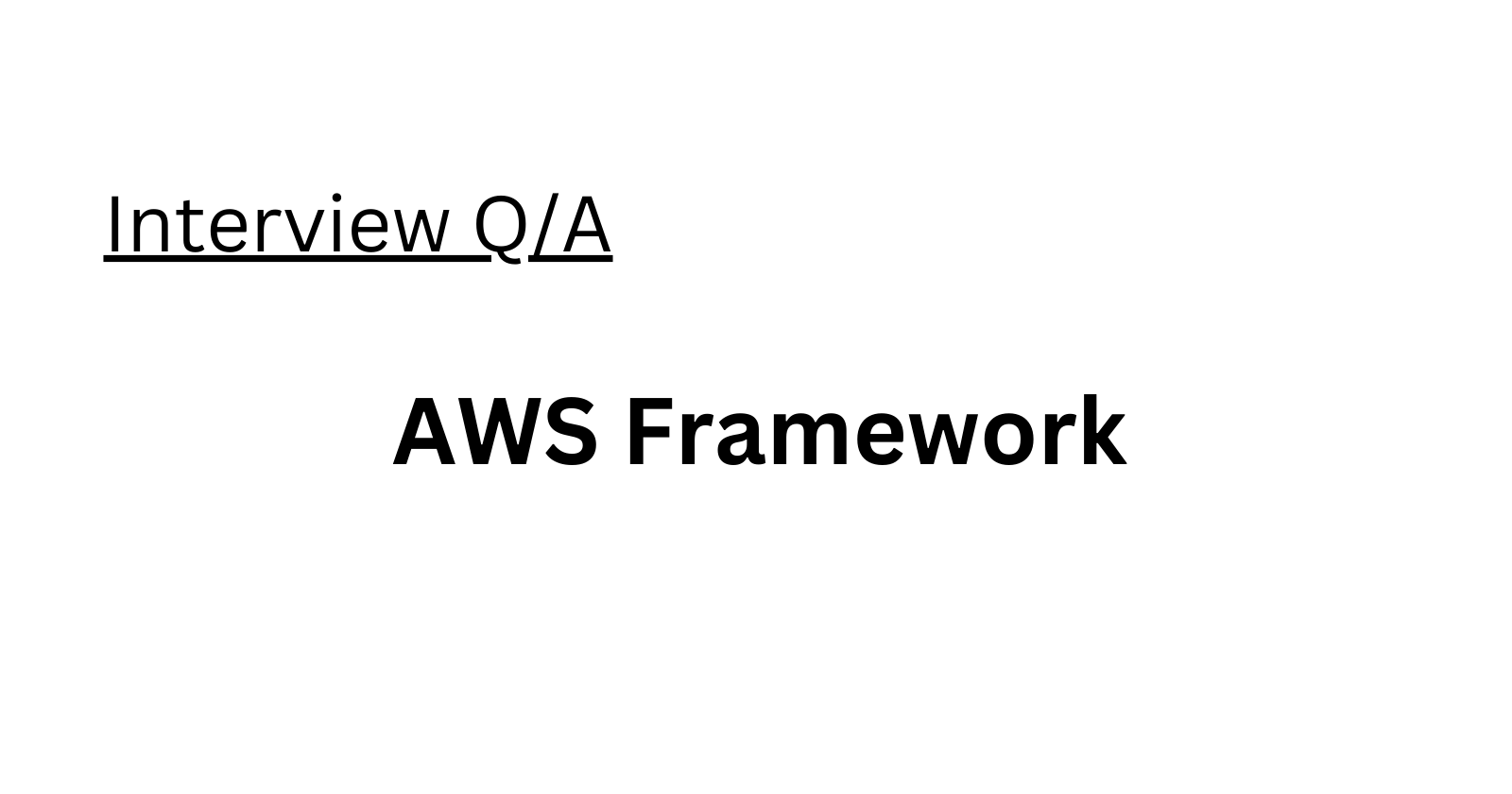AWS Framework
 Amrutha D
Amrutha D
Introduction
Cloud computing has revolutionized the way businesses operate, offering unmatched scalability, flexibility, and cost-efficiency. Amazon Web Services (AWS), a prominent cloud provider, has become a leader in the field, providing a wide array of services to cater to diverse business needs. However, navigating the cloud can be complex without a well-planned architectural strategy. To address this, AWS has introduced the Well-Architected Framework, a set of best practices designed to guide architects, developers, and IT professionals in creating secure, reliable, and cost-effective systems on the AWS platform.
In this article, we will explore the AWS Well-Architected Framework's six key pillars: Operational Excellence, Security, Reliability, Performance Efficiency, Cost Optimization, and Sustainability. Additionally, we will provide valuable insights, key principles, best practices, and infographics to facilitate a better understanding of each pillar.
Operational Excellence
Operational Excellence is about effectively supporting workloads, gaining insight into their operation, and continuously improving processes and procedures. Five design principles guide this pillar, including performing operations as code, making frequent reversible changes, refining operations procedures, anticipating failure, and learning from operational failures.
Operations teams should understand business and customer needs, create and validate procedures to respond to operational events and collect metrics to measure the achievement of desired business outcomes. A key aspect is designing operations to support evolution over time and incorporating lessons learned through performance.
Security
The Security pillar emphasizes the protection of data, systems, and assets in the cloud. Seven design principles guide this pillar, such as implementing a strong identity foundation, enabling traceability, applying security at all layers, automating security best practices, and protecting data in transit and at rest.
Before architecting any workload, it's crucial to establish security practices, control access, identify security incidents, protect systems and services, and maintain data confidentiality and integrity. The AWS Shared Responsibility Model allows organizations to focus on their specific security goals while AWS handles physical infrastructure security.
Reliability
Reliability ensures that workloads perform their intended functions correctly and consistently. Five design principles underpin this pillar, including automatically recovering from failure, testing recovery procedures, scaling horizontally, avoiding capacity guesswork, and managing change through automation.
Foundational requirements that influence reliability, like network bandwidth, should be in place before building any system. AWS provides the scalability and resources needed to address these requirements. Anticipating and accommodating changes is crucial for a reliable workload, including failures, spikes in demand, and feature deployments.
Performance Efficiency
The Performance Efficiency pillar focuses on using computing resources efficiently and maintaining that efficiency as demand changes. Five design principles guide this pillar, including democratizing advanced technologies, going global quickly, using serverless architectures, experimenting more often, and considering mechanical sympathy.
A data-driven approach helps build high-performance architecture. Regularly reviewing choices, monitoring, and making trade-offs in architecture are key. The optimal solution varies, and AWS Well-Architected workloads often combine multiple approaches to improve performance.
Cost Optimization
Cost Optimization ensures systems deliver business value at the lowest price point. Five design principles, such as implementing cloud financial management and adopting a consumption model, guide this pillar.
Architects must consider trade-offs, sometimes prioritizing speed to market over cost optimization. Using appropriate services, resources, and configurations is crucial for cost savings.
Sustainability
Sustainability addresses the long-term environmental, economic, and societal impact of business activities. Six design principles, including understanding your impact and maximizing utilization, guide this pillar.
To achieve sustainability goals, organizations should choose AWS Regions based on business requirements. User behavior patterns can help identify improvements, and architecture and software patterns can optimize resource usage. Automation and managed services play a role in reducing sustainability impacts.
Conclusion:
The AWS Well-Architected Framework's six pillars offer a comprehensive approach to building robust and efficient cloud architectures. By adhering to these principles, organizations can enhance the quality, security, and cost-effectiveness of their cloud-based solutions. Embracing the Well-Architected Framework equips businesses to tackle the challenges of the evolving cloud landscape while delivering scalable, reliable, and sustainable solutions.
Subscribe to my newsletter
Read articles from Amrutha D directly inside your inbox. Subscribe to the newsletter, and don't miss out.
Written by

Amrutha D
Amrutha D
Gen AI Video Creator | Gen AIOps | AIOps Cloud DevOps Engineer | Let's Connect & share Technical knowledge & grow together in Technologies Everyday..